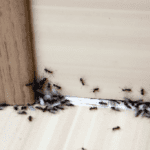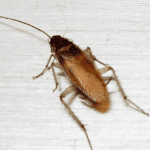Rodent control methods

June 28, 2022
/
Rodent control methods
Rodent control methods
Rodents are a common problem in urban areas in city centers. The species we encounter are mainly mus musculus (house mouse) and rattus norvegicus (sewer mouse). Apart from being an open spectacle, rodents are also a source of many and dangerous diseases such as salmonellosis, leptospirosis and plague, as well as a number of contagious and dangerous to humans, as well as the transport of persons such as bedbugs and fleas. Initially, the space is assessed and a plan is set up to install bait stations to create a protection zone, made of hard plastic for safety and protection of the drug from the sun and water, as well as to keep away other non-target organisms. This is the most effective and safe method of rodent control. From there, depending on the space and its importance, either sticky mousetraps or lenses can be used. The latter are biological methods of control but not so efficient. Finally, for places that are not accessible from, small recesses, etc. paper bait stations with an indication for the fact that they have rat poison inside.Today, an era of big media and confused goals, among the many problems of Environment, Health and Economy is also identified by the existence of rodents
A problem with direct consequences for the economy but mainly for Public Health. Of course, it should not be overlooked that rodents cause significant financial burdens on human societies. It is estimated that in 1982 alone, 2.5 billion tonnes of food, valued at about $ 30 billion, were destroyed. But on the opposite bank it is estimated that the number of deaths from rodents exceeds the number of deaths from all wars to date. Let's take the things from the beginning. There are three species of rodents that we are interested in because they live in the human environment.Norwegian sewer or rat (Rattus norvegicus)
It has a large and sturdy body (It reaches 500 grams), brown hair, limited vision with color blindness but excellent smell, taste, hearing and touch. It is omnivorous but prefers meat. He is hesitant and nervous about new objects and his nests are mainly in the basements. He is an excellent swimmer and a good climber.The Roof, Ship, or Black Mouse (rattus rattus)
It has a body smaller than the Norwegian, black hair, limited vision with color blindness but excellent smell-hearing-touch. It is omnivorous but likes fruits, nuts, seeds and vegetables. Its nests are on the roofs, walls and trees. He is a very good climber but not very water friendly although he can swim.The house mouse (mus musculus)
It has a very small and slender body, the same vision and other functions as the previous two and feeds on grain seeds. It has its nests isolated in stored materials. He is a good climber and can swim. It can jump up to 30cm, fall from 2.5 meters without getting hurt and can even walk on a rope. The indication that a space has mice can be made by specific characteristics such as: the exits, the footprints or the tail, the stains from their body fat, the gnawing on doors-boxes etc and the galleries that open . . Of course and with direct eye contact quite rare of course. Let us briefly look at the diseases they cause: Plague, Hemorrhagic Jaundice. Endemic Rash Typhoid, Trichinosis, Salmonellosis, Leptospirosis, Sodoko fever, Tularemia and 15 to 20 other diseases.Control methods can be divided into two categories.
The first consists of remediation measures and the second is Rodenticide. The remediation measures aim at the disappearance of the Food and Shelters of the mice. This is not something simple and should be done:- Cleaning of storage areas and removal of all junk from these areas
- Proper handling and disposal of waste
- Collect food scraps, especially in grocery stores.
- Isolation of buildings with special protection measures.
General autumn cleaning is more important for your health than you think
Rodenticide can be done:
- With poisonous gases (method of fumigation, not widespread due to danger to humans)
- With poisoned baits (foods to which a strong poison has been added)
- With Ready-made, they quickly realize the danger and do not approach the bait again.
Recent Posts
cleansecta.gr
Mosquito protection measures
cleansecta.gr




